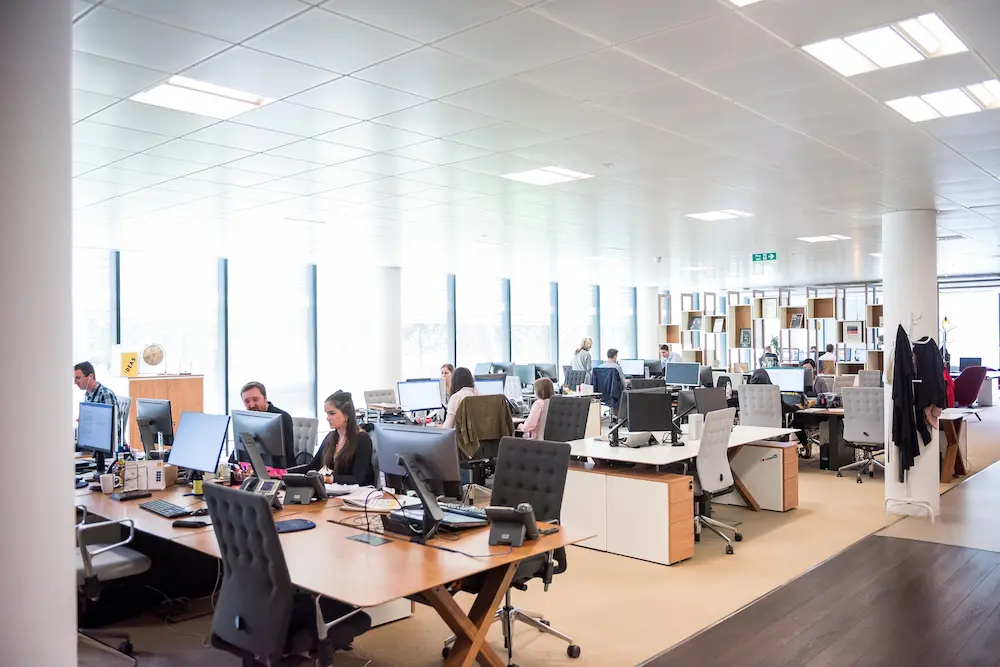Creating a healthy work environment is not just a necessity – it’s an art. It’s where creativity meets strategy and where productivity blossoms from well-being. A thriving workspace can ignite innovation, boost morale, and lead to greater job satisfaction. However, the journey to creating such a sanctuary requires understanding, commitment, and a dash of ingenuity. This guide will help you navigate the process, offering practical tips and insights to transform your workplace into a haven of productivity and wellness. Let’s embark on this journey together to foster a healthy and dynamic working environment.
1. Appreciate Your Employees
Showing appreciation for your employees can significantly contribute to a healthy work environment. Recognizing their hard work, achievements, and dedication fosters a sense of value and belonging, which can boost morale and productivity. The options for employee appreciation gifts range from small tokens of appreciation like thank-you notes or gift cards to more significant gestures like team outings and recognition ceremonies. Remember, a happy employee is a motivated employee.
Choosing the proper appreciation gifts also provides an opportunity to reinforce company culture and values. For example, if your company promotes health and wellness, consider gifting fitness trackers, gym memberships, or health food baskets. If learning and growth are your focus, books, online course subscriptions, or tickets to industry conferences can be thoughtful gifts. Remember, the goal isn’t just to give a gift but to communicate appreciation in a way that resonates with your employees and aligns with your company’s ethos.
2. Set Up a Proper Ergonomic Workspace
Creating an ergonomic workspace is the bedrock of a healthy working environment. An ergonomically designed space reduces the risk of work-related injuries and boosts productivity. The key lies in setting up a workspace that supports the natural posture and minimizes strain on the body. This includes adjustable chairs that provide proper back support, desks at the right height, and computer monitors placed at eye level to prevent neck strain.
In addition to furniture placement, encouraging regular breaks to stand, stretch, and move around is also part of an ergonomic strategy. Extended periods of sitting can lead to health issues like obesity, heart disease, and even diabetes. So, promoting activities like standing meetings, walking breaks, and desk exercises can significantly contribute to employee well-being. Remember, a comfortable employee is a productive employee.
3. Invest in Natural Light
Natural light is crucial for a healthy work environment. It improves mood morale and reduces fatigue and eyestrain. It also regulates the body’s circadian rhythm, promoting better sleep and overall wellness. Designing workspaces with ample windows, open spaces, and glass partitions can greatly enhance the working environment and employee productivity.

However, not all workspaces have the luxury of ample natural light. In such cases, opting for lighting solutions that mimic natural light can be beneficial. These options could include using full-spectrum light bulbs or installing light therapy lamps in the office. Moreover, encouraging employees to take outdoor breaks or providing workspace options near natural light sources can also help. Remember, a well-lit environment fosters a bright and productive workforce.
4. Implement a No-Distraction Policy
A healthy work environment is one where employees can focus on their tasks without unnecessary interruptions. A no-distraction policy can significantly enhance productivity and job satisfaction. This policy may include dedicated quiet hours where meetings are not scheduled, and employees are encouraged not to interrupt each other. It could also involve setting up quiet zones or rooms where employees can work without background noise or interruptions.
To minimize distractions, address both physical and digital disruptions. Encourage employees to manage their digital notifications by scheduling specific times for checking emails and messages. Streamline workflow with productivity tools to reduce the need for multitasking and create an interruption-free environment. This enables deep work, fostering creativity and boosting productivity.
5. Encourage Open Communication and Feedback
Clear and open communication is a powerful tool in creating a healthy working environment. Employees who feel heard, valued, and supported are more likely to be satisfied with their job and stay motivated. Therefore, fostering a culture of open communication can significantly contribute to employee morale and well-being.
This could include regular team meetings to discuss progress, challenges, and goals. It could also involve one-on-one meetings with managers to provide feedback and address any concerns or issues. Additionally, implementing anonymous employee surveys can be an effective way to gather honest feedback and make necessary changes in the workplace.
Remember, open communication not only promotes a healthy work environment but also builds trust and strengthens relationships among coworkers. Take the time to actively listen to your employees and make them feel heard and valued.
6. Prioritize Mental Health
Mental wellness at work significantly impacts employee productivity, creativity, and job satisfaction. Initiatives like stress management workshops, mindfulness sessions, and access to mental health professionals convey the value placed on employees’ well-being. Regular mental health surveys, anonymous hotlines, and a culture of understanding and compassion towards mental health concerns make a huge difference.
Creating a stigma-free work environment is crucial for employees to feel safe discussing mental health. Including mental health days in the sick leave policy, regular check-ins, and promoting an open dialogue can help. Managers should be trained to recognize signs of stress or mental health concerns and respond with empathy. A mentally healthy employee is engaged and productive.
7. Put Up Motivational Posters and Inspirational Quotes
The physical environment of a workplace can have a significant impact on employee well-being. Something as simple as putting up motivational posters or inspirational quotes around the office can contribute to employee motivation, creativity, and inspiration. These reminders serve as constant encouragement and can help maintain a positive mindset even during challenging times.
Consider including your employees in the process of choosing these posters or quotes to make them feel more invested in the workplace. You can also use this as an opportunity to showcase your company’s values and mission through these visual cues. Remember, a well-designed workspace that inspires and motivates employees can lead to a happier and more productive team.
Creating a healthy working environment is an ongoing process that requires constant evaluation and adjustment. It’s essential to regularly assess the effectiveness of implemented strategies and make changes as needed. Remember, investing in your employees’ well-being not only benefits them but also has a positive impact on your company’s bottom line. With these practical tips, you can create a workplace where employees thrive, leading to increased productivity, creativity, and overall satisfaction.

